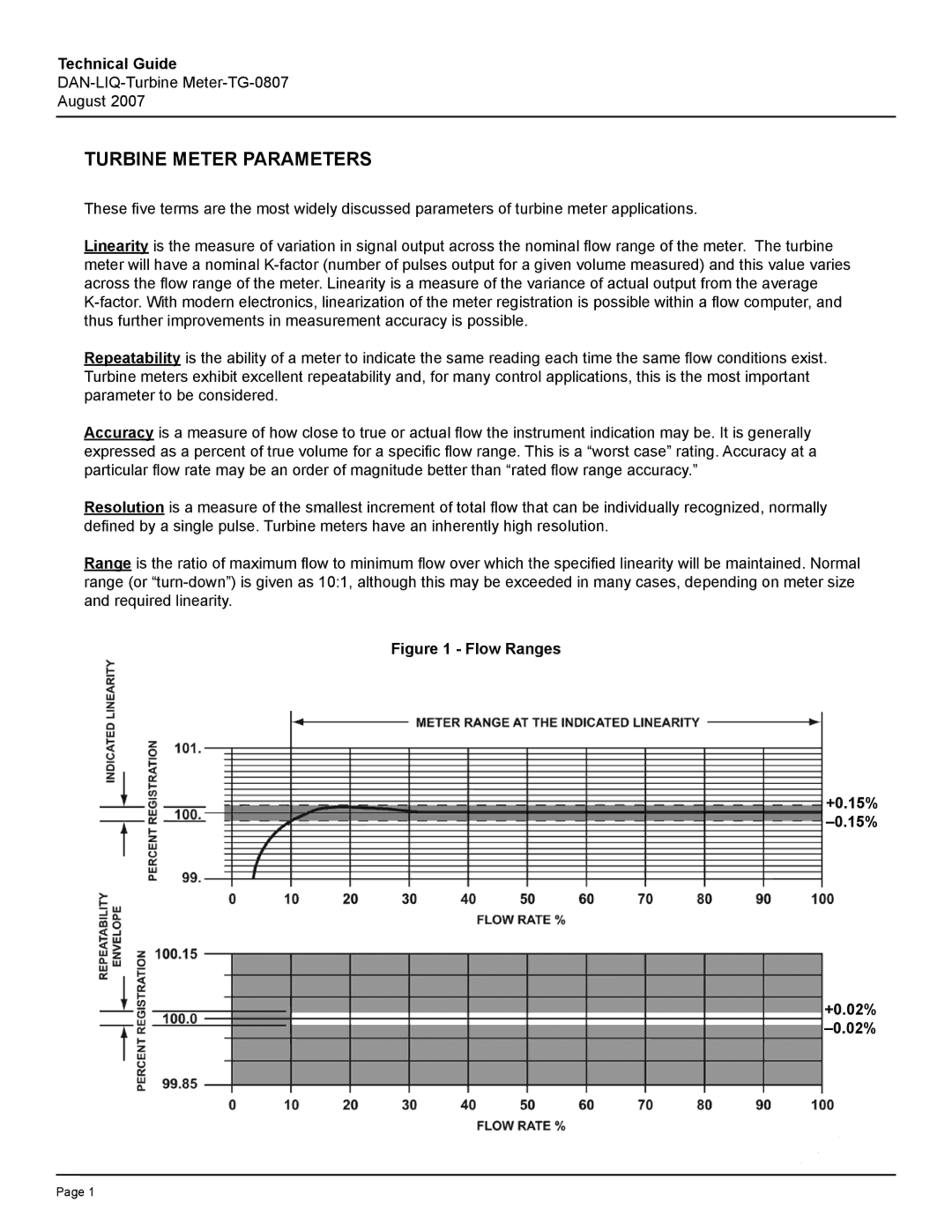
Technical Guide
August 2007
TURBINE METER PARAMETERS
These five terms are the most widely discussed parameters of turbine meter applications.
Linearity is the measure of variation in signal output across the nominal flow range of the meter. The turbine meter will have a nominal
Repeatability is the ability of a meter to indicate the same reading each time the same flow conditions exist. Turbine meters exhibit excellent repeatability and, for many control applications, this is the most important parameter to be considered.
Accuracy is a measure of how close to true or actual flow the instrument indication may be. It is generally expressed as a percent of true volume for a specific flow range. This is a “worst case” rating. Accuracy at a particular flow rate may be an order of magnitude better than “rated flow range accuracy.”
Resolution is a measure of the smallest increment of total flow that can be individually recognized, normally defined by a single pulse. Turbine meters have an inherently high resolution.
Range is the ratio of maximum flow to minimum flow over which the specified linearity will be maintained. Normal range (or
Figure 1 - Flow Ranges
+0.15%
+0.02%
Page
